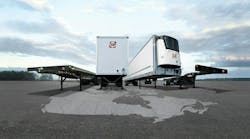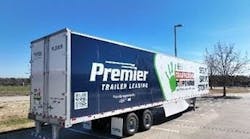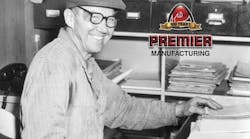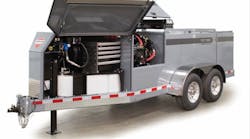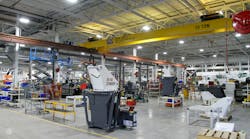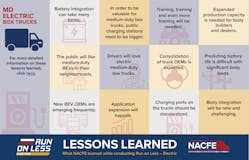A modest 100% of local box trucks will go electric sooner rather than later, so says the the top-level finding from the North American Council for Freight Efficiency's fourth and final market segment report.
The publication, Electric Trucks Have Arrived: The Use Case For Medium-Duty Box Trucks, is based on observations from last year’s Run on Less – Electric (RoL-E) freight efficiency demonstration.
The report noted that some applications within the duty cycle will be easier to electrify than those with more complex operations. When the simpler box truck portion of this market segment, about 380,000 trucks in the US and Canada, electrifies, it will result in the avoidance of 7,681,707 metric tonnes (MT) of CO2e annually.
“Electrification should happen fast for the simple trucks, and the industry should prioritize the other applications with regard to benefits and difficulty to bring to production given the smaller unit volumes,” says Mike Roeth, NACFE’s executive director.
Three fleet-OEM pairs in RoL-E operated medium-duty box trucks: Day & Ross with a Class 6 Lion6, Frito-Lay with a Class 6 Peterbilt-Cummins 220EV, and Roush Fenway Racing with a Class 6 ROUSH CleanTech Ford F-650.
The report found that medium-duty box trucks are a great application for electric trucks given their short distances and return-to-base operations. The vast majority of medium-duty box trucks are not driven long distances and are home every night. They are an ideal portion of the overall medium-duty truck market for electrification. However, more complex Class 6 and 7 trucks such as snowplows, refuse trucks, and fire trucks will require significant efforts which will delay the timing of electrification.
The report includes some basic information about medium-duty box trucks and the size and scope of the market. It looks at duty cycle and charging considerations and presents the benefits and challenges of battery electric vehicles. It includes information on the manufacturers and fleets that had medium-duty box trucks in the Run and provides details on what metrics were measured. There also is a discussion of total cost of operation.
“As we wrap up our report series from Run on Less – Electric, our detailed analysis of all four market segments are very much in line with our earlier thinking before and just after the Run,” Roeth says. “The marketplace in these shorter haul, return-to-base operations are ready today to electrify and the industry should work together as one to amplify and realize the benefits while mitigating challenges and risks urgently.”
To read the full report, visit www.nacfe.org.
